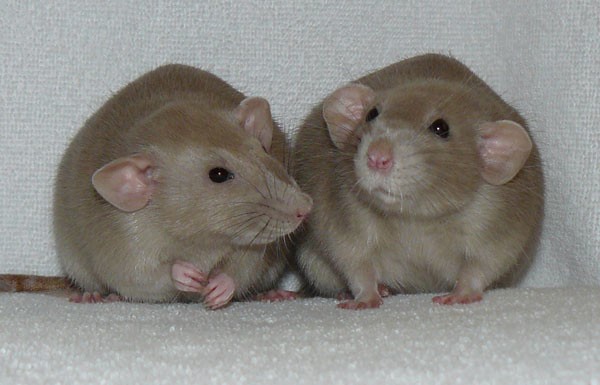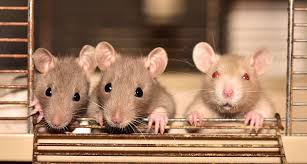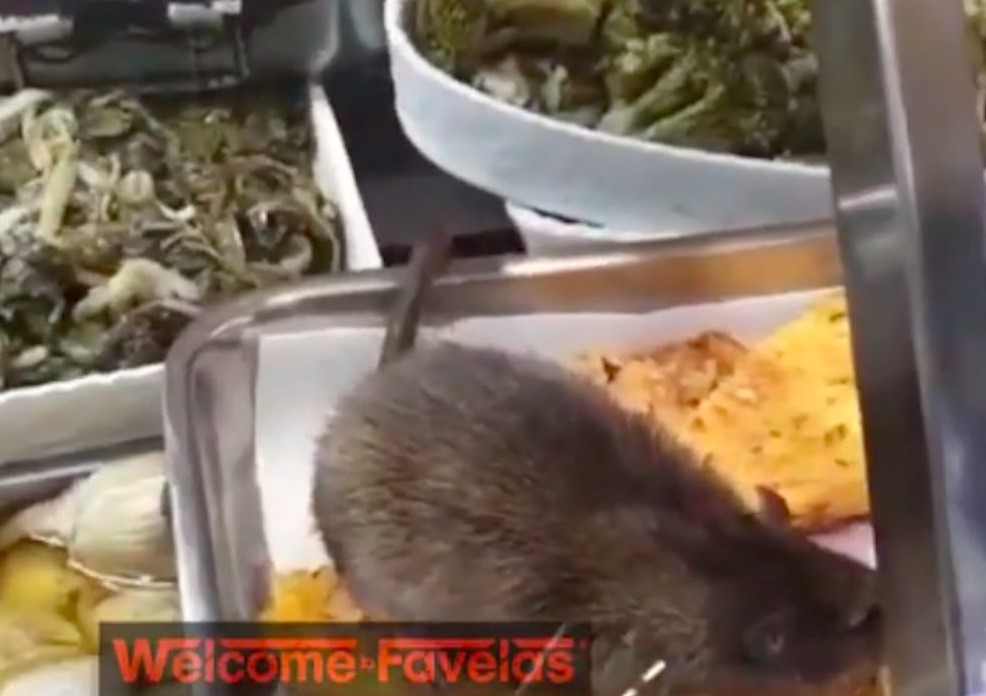Rats are known to be extremely social animals. This is a part of a very long phylogenetic history that all vertebrates share. Passing information about food source, shelter and potential threat or danger among each other, they live in tight—knit communities. This raises the question, how exactly do they communicate?

Many a research and studies have been conducted to find out their mode of communication. Rats are mainly nocturnal animals and have a poor vision. This has led to them developing very sharp olfactory, auditory and tactile senses. Rats have been known to use vocal signals of differing frequencies that lie mainly in the ultrasound range to communicate among each other.
Rats are believed to be the second most successful mammalian species after humans and this has a lot to do with their well-organised social life and communication. Right from the time they are born, the rat pups communicate with its mother. These pups are blind and deaf but still emit vocal sounds to communicate its needs to the mother. This communication arises due to the fact that these newly born pups cannot survive on their own and are completely dependent upon maternal care and nourishment. It is during this time only that they develop species-specific odour recognition capacities. Because of growing with their siblings, they develop olfactory senses and this is what helps them distinguish between members of their own species and other predators in the future.
As they grow, they develop very specific adult vocalizations. The type of sound emitted can be categorized into 2 main categories: the 22 kHz group of sounds, which express negative or aversive state, and the 50 kHz group of sounds which express positive or appetitive state.
The negative /aversive sounds are usually produced when in presence of a predator and is used as a defence mechanism by these rats and other rodents. When one member of the social group makes such a noise, the entire group have been seen to run into hiding, during studies and tests conducted. These noises, termed as alarm calls, helps the organisms to escape to safety, without even coming in direct contact with the said predator. These calls have evolved along with the species and are now used by the rodents to indicate any unpleasant experience along with potential danger and harm.
“Unique dialects help naked mole-rats tell friends from foes”
“When two naked mole-rats meet, the sound of their chirps may signal friend from foe.
These social rodents are famous for their wrinkly, hairless bodies. But the sounds this chatty bunch makes are notable. Their underground burrows resound with near-constant chirps, grunts, squeaks and squeals. Now, computer algorithms are helping make sense of the din.
The chirps are distinct to each colony. Young pups learn their colony’s calls. The sounds help the mostly blind, stranger-fearing rodents know who belongs. That recognition keeps family units strong and working well together.
Naked mole-rat groups seem more like ant or termite colonies than mammal societies. Every colony has a single queen. It’s supported by tens to hundreds of worker rats. Only the queen breeds. Workers dig elaborate underground tunnels in search of tubers to eat. Food is scarce in eastern Africa, where they live. So the rodents have to work together well to survive. And to protect their colonies, they’ll vigorously attack intruders.
Researchers had noted the rats’ raucous chatter before. But few actually studied it. “Naked mole-rats are incredibly cooperative and incredibly vocal,” says Barker “No one has really looked into how these two features influence one another.”
Apart from using sounds, rodents also communicate via chemical signals called pheromones. Rats use pheromones to signal warnings, mark territory, find food and also to attract mates. Using such scent signals, rats can detect if in the recent past another rat has experienced some unpleasant stimulus at the spot it currently is in. The previous rat’s pheromones can be identified by the rat and will lead it to get away from the spot as quickly as possible. Having a well-developed olfactory system works in their favour and these signals have become very effective means of communication.
Moreover, it has recently been proved that rats also have other sophisticated techniques of communicating with each other via transfer of brain signals.
“Mind-reading rodents: Scientists show ‘telepathic’ rats can communicate using brain-to-brain”
“Scientists also claim wires connecting one rodent to another can allow communication spanning continents via the internet
Scientists have shown that it is possible to transmit instructions from one animal to another by a telepathic-like process of brain-to-brain communication.
They believe it is the start of what they are calling “organic” computing based on networks of interconnected brains.
Pairs of laboratory rats have communicated with each other using microscopic electrodes implanted into their brains. One rat was able to pass on instructions to the other rat in a separate cage using a system of electronic encoding.
Brazilian and American scientists say in their study published today that the telepathic-like breakthrough represents an important advance in establishing new ways of communicating between individuals using brain power alone.
One rat in each pair, the “encoder”, detected the physical signals of where to find a food reward and pass on these instructions to the second “decoder” rat, which was able to use the encoded signals of the first rat to find a similar reward in its own cage without any further help.
The scientists also showed that the direct brain-to-brain communication, carried by fine wires connecting one rat to the other, can be extended over the internet, with rats in Brazil communicating with rats in North Carolina, some 7,500km away.”
These sophisticated communications in rodents can be utilized by us humans to convey to them the message that they should stay away from our applications and devices. Getting them to be scared of our products can solve all our problems of rat infestation and damage. If they are naturally repelled by our applications and appliances, they will not want to come near it, thus saving us the trouble of having to shoo them away by using methods like trapping and pest control programs and harmful rodenticides.
Equipped with this knowledge, we at C Tech Corporation have come up with a revolutionary and unique product, Rodrepel™.
Rodrepel™ is a non-hazardous, non-carcinogenic, non-mutagenic, low in toxicity and environmentally safe anti-rodent additive. It is also effective in case the target species are other animals. We believe in solving the problem of infestation by repelling the pests and refraining from killing them. Our product works on the principle of repellence and effectively stimulates them to stay away from applications treated with Rodrepel™.
This product acts through a series of highly developed intricate mechanisms ensuring that rodents are kept away from the target application. Our eco-friendly product does not kill the target species but only repels them.
The product triggers a fear response in rodents. It causes severe temporary distress to the mucous membrane of the rodents due to which the pest stays away from the application. The product triggers an unpleasant reaction in case the pest tries to gnaw away at the application. After encountering the above-mentioned emotions, the animal instinctively perceives it as something it should stay away from and stores this information for future reference. The fact that certain rodents are repelled is mimicked by other rodents as well. Thus, the other rodents too stay away from the applications. The unpleasant experience is imprinted within the animal’s memory and passed on to its progeny.
The products are available in the form of a solid masterbatch, liquid concentrate, lacquer, wood polish additive, and spray.
The product available in the form of solid masterbatch can be incorporated into a range of polymeric and coating applications including films, wires, cables, pipes, etc. thereby making the end application rodent resistant.
The product available in the form of liquid concentrate can be diluted with paints and other organic solvents and can be applied on walls of the infested area, like the interior and exterior of the house, garages, buildings, offices, etc. The liquid concentrate can also be diluted with water and used as a spray to spray around the infested area.
The already installed cables, pipes, and other applications can be coated with the lacquer to protect them from the rodents gnawing on this application and thus preventing the damage. The lacquer is a transparent product and it does not wear off easily.
The wood polish additive can be blended with wood polish and applied to the wooden articles and furniture.
Our product in the form of a spray is an easy-to-use product. It can be sprayed on the infested area to repel the rodents and prevent them from entering the premises.
By using our products, you can get an effective and long-lasting solution against the persistent rodent nuisance.
Rodrepel™ is cost-effective, eco-friendly, and safe for everybody including us humans and the environment as a whole. It is RoHS, RoHS2, RoHS3, REACH, NEA, EU BPR, APVMA compliant and FIFRA exempted.
Contact us at technical.marketing@ctechcorporation.com if you’re facing problems with rodents and get the best remedies to combat the pest menace.
Also, visit our websites:
1] http://www.ctechcorporation.com/
Follow our Facebook pages at:
1] https://www.facebook.com/Combirepel-411710912249274/
2] https://www.facebook.com/Termirepel-104225413091251/
3] https://www.facebook.com/Rodrepel-120734974768048/
Follow us on our Twitter pages at:
1] https://twitter.com/rodrepel
2] https://twitter.com/termirepel
3] https://twitter.com/combirepel
References:
1] Social Origin of Vocal Communication in Rodents | Stefan M. Brudzynski
2] The Role of Pheromonal Responses in Rodent Behavior: Future Directions for the Development of Laboratory Protocols | Rebecca H Bind, Sarah M Minney, SaraJane Rosenfeld, and Robert M Hallock


